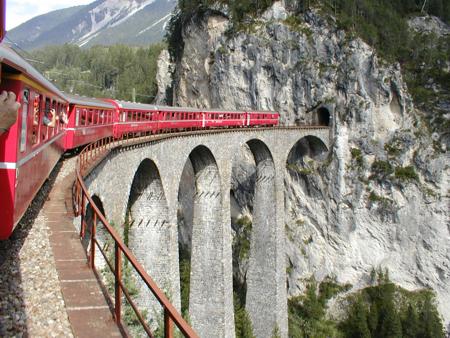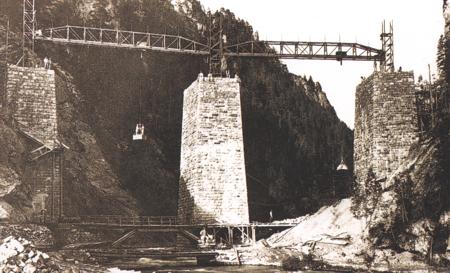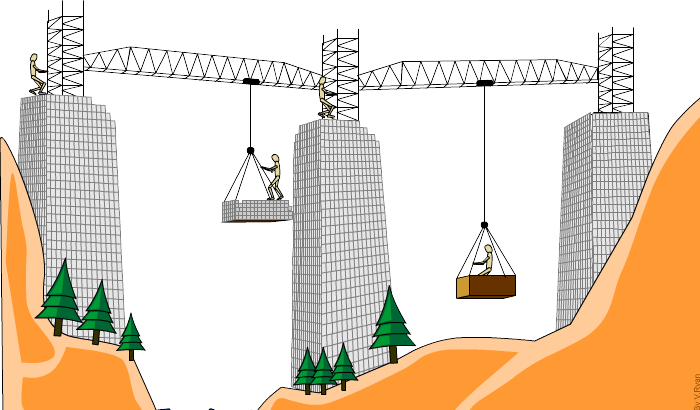| CLICK HERE FOR INDEX PAGE |
| SWISS MOUNTAIN RAILWAY TECHNOLOGY - THE LANDWASSER VIADUCT |
| V. Ryan © 2004 - 2009-2017 |
| Switzerland has large areas of land that are mountainous. In the 19th Century and before, the mountainous terrain meant that it was difficult to travel across country and consequently communications were relatively poor. Switzerland has winters that lead to high levels of snowfall. Travelling on foot or by horse was difficult and in winter very dangerous due to the geography of the country and its winter weather conditions. |
| The Swiss railway engineers of the ninetieth and twentieth century had to be extremely innovative, imaginative and courageous to build a complex and efficient mountain railway system. This not only included planning and building difficult mountain routes but also the many bridges and tunnels needed to cross and go under mountainous areas. The Swiss are still investing heavily in their railway network, making it one of the most efficient and advanced in the world. |
| One of the most impressive feats was the building of the Landwasser Viaduct (built 1902) which carries a mountain railway track. This is possibly one of the most famous railway viaducts / bridges in the world and is seen in most Swiss travel / holiday brochures. |
 |
| When approaching the viaduct the train travels
through the Landwasser tunnel. The engineers had to build the viaduct
starting at the end of the tunnel. The photograph above shows the tunnel
exit and a shear drop, where the viaduct begins. The viaduct has six
arches, each spanning 20m / 65 ft. The construction of the viaduct is
impressive for two reasons; 1. All materials had to be transported to this remote mountain site before construction could begin. 2. The height of the arches meant that traditional building techniques could not be used and new techniques had to be developed. |
| Construction of the Landwasser Viaduct - 1902 |
| The Landwasser Viaduct became famous amongst engineers because of the new techniques used during its construction. Unlike arch bridges of the past, scaffolding was not used to build the pillars. Instead, steel towers were built and the stone pillars were constructed, stone by stone, around them. The internal steel towers were extended as the height of the stone pillars grew. |
 |
| Above - the construction of the viaduct in 1902. |
| Below - graphical representation of the main construction technique |
 |
| The animation shows how materials and workers were transported to the top of the stone pillars. |
QUESTION: 2. How do you think the arches at the top of the stone pillars were constructed? |
| CLICK HERE FOR TECHNOLOGY AND CULTURES INDEX PAGE |
| CLICK HERE FOR STRUCTURES INDEX PAGE |